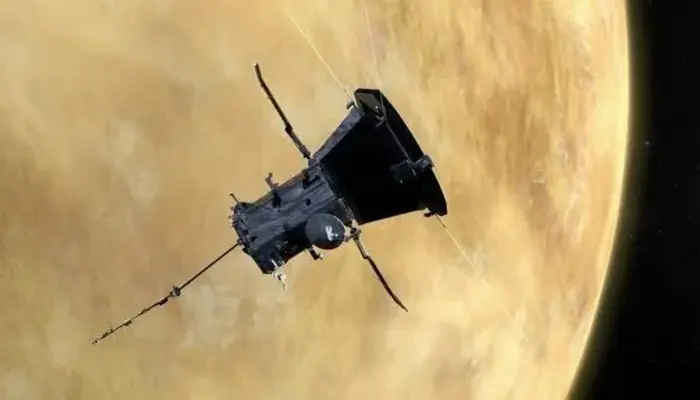NASA’s Parker Solar Probe Set for Historic Flyby

Today marks a significant milestone in space exploration as NASA’s Parker Solar Probe completes its seventh swing past Venus. This flyby will be the probe’s final maneuver around the planet before it embarks on its journey to within 3.8 million miles of the sun’s surface. This will make the Parker Solar Probe the closest human-made object to ever approach our star.
A Monumental Achievement
The Parker Solar Probe’s upcoming close encounter with the sun is being hailed as a groundbreaking achievement. Nour Raouafi, an astrophysicist and project scientist for the Parker Solar Probe mission at the Johns Hopkins University Applied Physics Laboratory, compared the milestone to the historic moon landing in 1969. “We are basically almost landing on a star,” Raouafi told BBC News earlier this year. “This will be a monumental achievement for all humanity.”
Mission to Unravel Solar Mysteries
Launched in 2018, the Parker Solar Probe set out on a daring mission to “touch” the sun. Its goal is to unravel some of the greatest mysteries of our star, particularly why the sun’s corona, the outermost layer of its atmosphere, is much hotter than the surface itself. The probe has already started to make progress in understanding these puzzles, offering scientists new insights into the behavior of our sun.
Trump’s Return Celebrated by Supporters at White House
The Probe’s Journey
The Parker Solar Probe, which is about the size of a small car, has already passed several key milestones on its journey towards the sun. As it continues its mission, it will get closer and closer to the star, gathering vital data about solar activity and the sun’s mysterious outer layers. This data is crucial for understanding the sun’s behavior, including the causes of solar winds and space weather, which can impact both technology on Earth and the broader solar system.
By the end of its mission, the Parker Solar Probe will have made several flybys of Venus, using the planet’s gravity to slingshot itself closer to the sun with each pass. These maneuvers will ultimately bring the probe to within unprecedented proximity to our star, offering scientists an up-close view that was once unimaginable.
Follow Day News on Google News, Instagram, YouTube, Facebook, Whats App, and TikTok for latest updates




